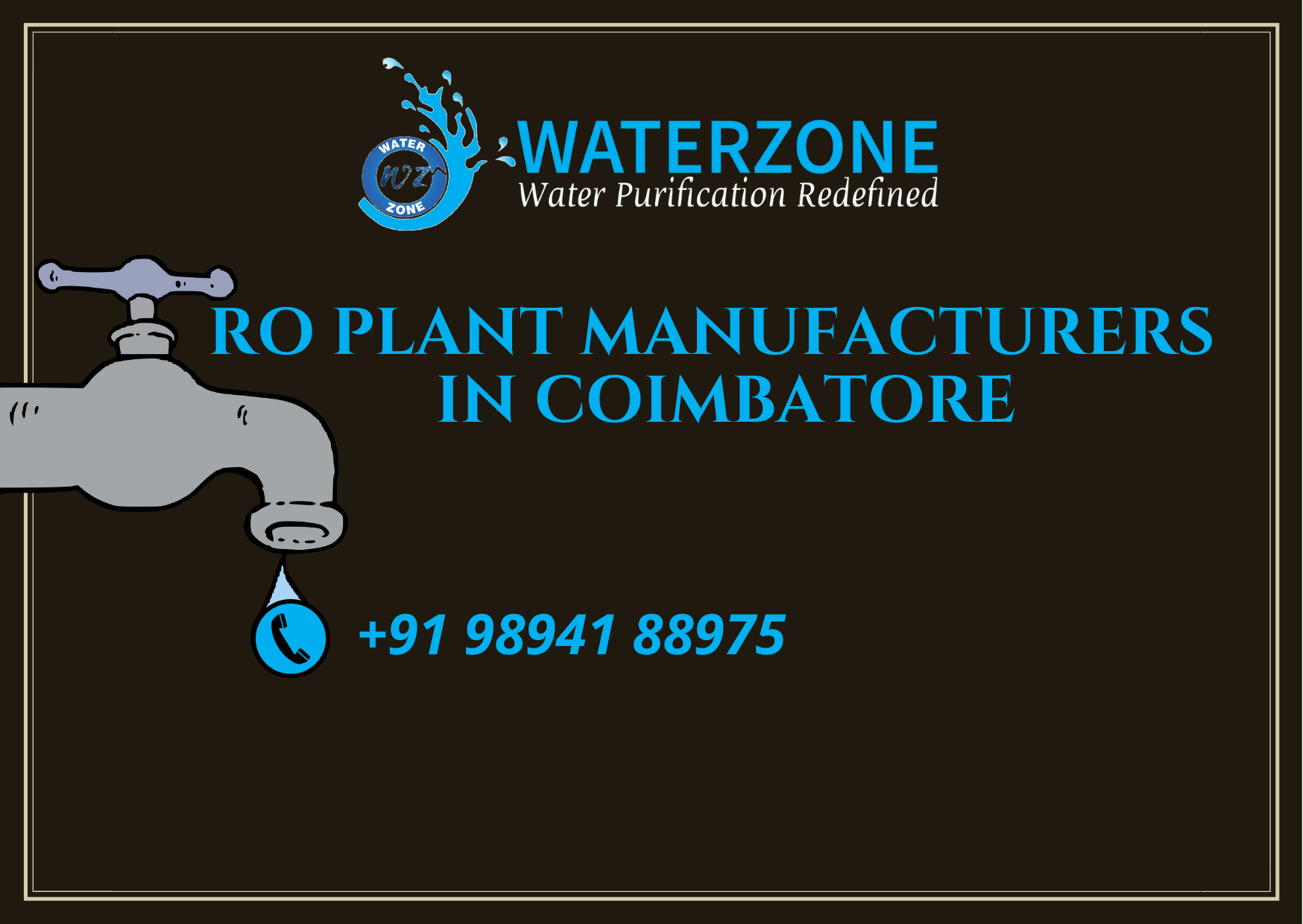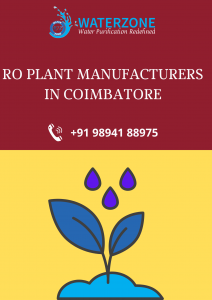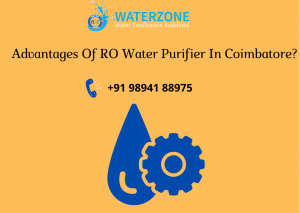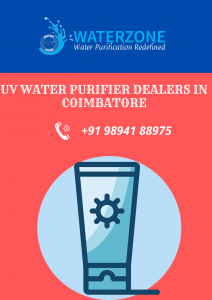Reverse osmosis is a process that industry uses to clean water, regardless of whether for modern interaction applications or to change over bitter water, to tidy up wastewater or to recuperate salts from modern processes.
Turn around osmosis won’t eliminate all toxins from water as disintegrated gases, for example, broke down oxygen and carbon dioxide not being taken out. Be that as it may, reverse osmosis can be exceptionally powerful at eliminating different items, for example, trihalomethanes (Thm’s), a few pesticides, solvents and other unstable natural mixtures (Voc’s).
The reverse osmosis processes
In the reverse osmosis process, cellophane-like membranes separate purged water from polluted water. RO is the point at which a strain is applied to the concentrated side of the membrane constraining cleaned water into the weaken side, the dismissed pollutions from the concentrated side being washed away in the oddball water.
RO plant manufacturers in Coimbatore states that RO can likewise go about as an ultra-channel eliminating particles, for example, a few miniature living beings that might be too huge to even consider going through the pores of the membrane.
RO membranes
Normal membrane materials incorporate polyamide thin membrane composites (TFC), cellulose acetate (CA) and cellulose triacetate (CTA) with the membrane material being winding injury around a cylinder, or empty filaments packaged together.
Hollow fiber membranes have a more prominent surface region and subsequently limit yet are more effortlessly obstructed than twisting injury membranes.
RO membranes manufactured by RO plant manufacturers in Coimbatore are appraised for their capacity to dismiss compounds from debased water. A dismissal rate (% dismissal) is determined for every particular particle or toxin just as for decrease of absolute disintegrated solids (TDS).
TFC membranes have unrivaled strength and toughness just as higher dismissal rates than CA/CTA membranes. They additionally are more impervious to microbial assault, high pH and high TDS. CA/CTA’s have a superior capacity to endure chlorine.
Sulphonated polysulphone membranes (SPS) are chlorine lenient and can endure higher pH’s and are best utilized where the feed water is delicate and high pH or where high nitrates are of concern.
Factors influencing system and process execution
The exhibition of a system relies upon variables, for example, membrane type, stream control, feed water quality, temperature and tension.
Additionally just piece of the water entering the unit is useable, this is known as the % recuperation. This is impacted by the variables recorded previously.
For instance, how much treated water created can diminish by around 1-2% for each 1 degree Celsius beneath the ideal temperature.
Systems should be all around kept up with to guarantee great execution with any fouling requiring cleaning augmenting the result of water.
Biocides might be required and the decision of biocide would rely upon the membrane type, then again, different channels might be needed to eliminate chlorine from water to ensure the existence of the membranes.
To this end, a decent treatment system is required and information on the particular foulants so the ideal cleaning and support chemicals can be picked.
Further developing system execution utilizing expert RO chemicals
The presentation of RO membrane systems given by RO plant manufacturers in Coimbatore, water quality and establish execution can be upgraded with the cautious choice and utilization of cutting-edge treatment chemicals planned explicitly for such water cleaning offices and their touchy membranes.
RO plant manufacturers in Coimbatore have scope of cutting edge turn around osmosis chemicals are deductively formed to assist with streamlining reverse osmosis recuperation rates, work on the functional productivity of RO plant establishments; and decrease issues related with scaling and erosion.
Chemicals used in RO process
RO plant manufacturers in Coimbatore have scope of superior execution invert osmosis chemicals depend on cutting edge details and incorporate RO membrane cleaners and cleansers, scale inhibitors and antiscalants, corrosion inhibitors, biocides, antifoulants, de-chlorinators, and flocculants.
RO plant manufacturers in Coimbatore progressed RO synthetic definitions have been grown explicitly for the worldwide membrane filtration and opposite osmosis markets and deal a few key presentation benefits including cost, accommodation, functional execution and natural effect.
RO plant manufacturers in Coimbatore have progressed reverse osmosis chemicals are experimentally figured out to assist with upgrading reverse osmosis recuperation rates, work on the functional effectiveness of RO plant establishments; and decrease issues related with scaling and corrosion.
Scaling
Salts comprise of sets of decidedly charged cations and adversely charged anions framing nonpartisan particles. Sodium chloride (NaCl) is a model. Salt particles of a similar structure pack in customary rehashed designs in three-layered structures to frame gems of various shapes. Sodium chloride precious stones are cubic when seen under the magnifying lens, or developed, as certain specialists do, as huge single cubic gems. At the point when glasslike salts break up in water, the particles separate into unreservedly versatile cations (e.g., Na+) and anions (e.g., Cl-) each feebly fortified and balanced out (solvated) by water atoms (H2O). Similarly, potassium nitrate (KNO3) ionizes in water to shape K+ and NO3-particles each solvated by water atoms.
Solution pH
The principle impact of pH on scaling is the reversible development of carbonate particles from bicarbonate. Calcium carbonate scaling happens at higher pH because of the presence of higher centralizations of carbonate particles. The impact of pH should be visible in the reversible arrangement of CO2 gas or carbonate particles in regular water. Corrosive expansion drives the harmony to one side (toward CO2 development). Scathing expansion drives the balance to one side (toward carbonate particle arrangement as displayed underneath). A third and significant peculiarity ought to be noted. Since CO2 gas is handily degassed from water, its misfortune adds up to losing sharpness, consequently expanding the alkalinity of the framework, causing an increment in the carbonate particle fixation. This degassing of CO2 within the sight of adequate convergence of calcium can cause calcium carbonate scaling.
CO2+ H2O → H2CO3
H2CO3+ OH-→ HCO3-+ H2O
HCO3-+ OH-→ CO3-2+ H2O
BB1
Normal waters are cradled by bicarbonate particles at pH 5.35-7.35. The pKa of the change of carbonic corrosive to bicarbonate, when titrated with alkalinity, is 6.35. At this pH, the centralization of carbonic corrosive equivalents that of bicarbonate particles. At pH=7.35, one log esteem over the pKa esteem, the proportion of molar centralization of HCO3-/H2CO3 = 10, ascending to a proportion of 100 at pH=8.35. The pKa for the change of bicarbonate to carbonate is 10.33. When raising the pH of RO feedwater with harsh infusion to assist with ionizing the frail boric corrosive and silicic corrosive for dismissal by layers in the district of pH= 11, the utilization of anti-scalant to control calcium carbonate scaling is required because of expanded carbonate particle fixation.
Exponential growth
Activity of RO system is generally impacted by microbes. In normal waterways, microorganisms exist in planktonic (moving) state or in sessile (moored) state. It is assessed that close to 100% of all microscopic organisms are secured to surfaces and ensured in a covering of polysaccharides that they make known as biofilm.
For further details and speedy service please contact RO plant manufacturers in Coimbatore.



